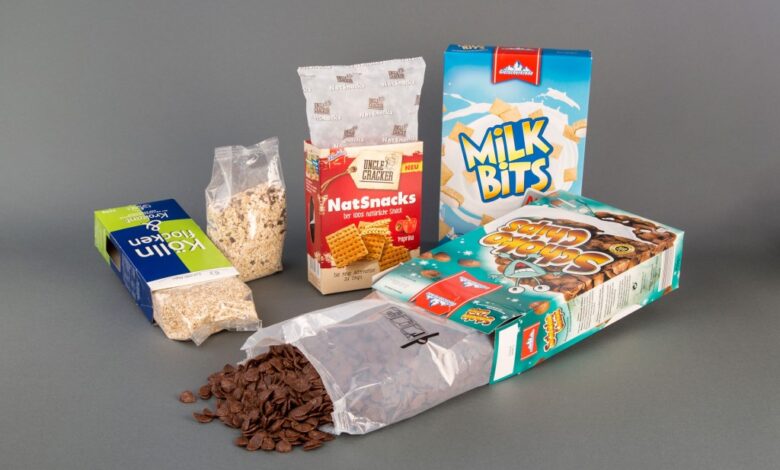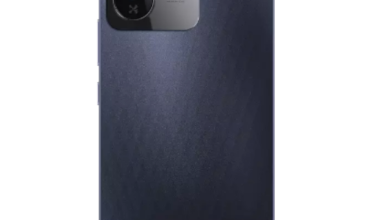Minimalist Cereal Packaging: Trends and Benefits
Custom Cereal Packaging Boxes at Wholesale Prices

Minimalist cereal packaging has become more popular in recent years. It focuses on simplicity, clean design, and purpose. Many brands are now choosing this style to reflect healthier choices and eco-friendly values.
Rise of Minimalist Aesthetics in Food Branding
In the past, cereal boxes were often loud and busy. Bright colors, mascots, and heavy graphics were the norm. Today, brands are moving toward clean, minimal designs. This trend follows a growing consumer interest in wellness and mindfulness. People want products that reflect these values, even in their packaging.
Minimalist design often uses a simple layout of custom cereal packaging boxes. Soft colors, clear fonts, and lots of white space create a calm and fresh look. Instead of shouting at the customer, these packages speak softly. They offer a sense of trust and transparency.
This design trend aligns with modern buying habits. Younger consumers, especially millennials and Gen Z, prefer brands that look honest and clean. Minimalist packaging makes the product feel more premium, even if the price is similar to other brands. It signals care in both product and design.
Companies that switch to this look often see a better connection with their customers. It helps the product stand out not by being loud, but by being calm. On a shelf full of busy designs, simplicity becomes the attention-grabber.
Also, digital shopping habits have influenced this trend. Online, simpler designs load faster and look better on screens. This helps in both visibility and sales.
Minimalism in food packaging is not just about style. It’s about building trust, clarity, and value through design. It communicates health, safety, and quality in an instant.
Eco-Friendly Materials and Their Growing Role
Modern consumers are more eco-conscious than ever before. This has pushed cereal brands to adopt greener choices in their packaging. Minimalist packaging often goes hand-in-hand with sustainability.
Many minimalist cereal boxes now use recycled or biodegradable materials. This reduces environmental waste. Fewer colors and less ink also mean fewer chemicals. These small changes make a big impact on the environment over time.
More brands are using unbleached cardboard, soy-based inks, and water-based coatings. These materials are safer for the earth. They also match the simple look that minimalist design needs. Eco-packaging doesn’t just look good—it sends a message of care and responsibility.
Customers feel better when they buy from brands that care about the planet. This emotional connection can build loyalty. It also makes customers more likely to recommend the product to others.
The cost of switching to eco-friendly packaging has gone down. As more companies adopt these options, prices for sustainable materials continue to drop. That makes it easier for small cereal brands to compete.
Minimalist designs reduce the amount of material used. With no need for flashy extras, brands can make smaller, lighter boxes. This saves on shipping and storage too. Less packaging means less waste—and less cost.
Sustainability and minimalism fit naturally together. As packaging becomes cleaner and greener, brands build trust while protecting the planet. It’s a win-win situation for both businesses and buyers.
Consumer Trust and Brand Transparency
Today’s customers want honesty. They want to know what’s in their food and where it comes from. Minimalist cereal packaging helps deliver that trust.
Simple designs leave no room for confusion. Clear labels and readable fonts make the information easy to find. There’s no need for bold claims or flashy distractions. Customers appreciate the quiet confidence of a clean, clear box.
This approach reflects the values of transparency and openness. When a brand shows its ingredients plainly, it earns respect. People feel safer eating food that is clearly labeled and simply presented.
Also, minimalist packaging often reflects what’s inside. A clean outside suggests a clean, natural product. This link builds customer trust even before the box is opened.
Many minimalist boxes highlight their key values right on the front. Whether it’s organic, gluten-free, or sugar-free, these facts are shared clearly and calmly. There’s no need for dramatic claims. Just the facts, presented with care.
Trust is hard to earn but easy to lose. Brands that use minimalist packaging show that they value honesty. They don’t hide behind bright colors or loud graphics. They speak softly, but truthfully. And customers reward that honesty with loyalty.
Shelf Impact in a Crowded Market
In a supermarket, shelves are packed with options. Every brand fights for a few seconds of attention. Minimalist packaging stands out by doing less.
When everything else is colorful and loud, a simple box draws the eye. It feels calm in a sea of chaos. That calmness signals quality and care. It creates a pause in the shopper’s mind.
Retail experts have noted that minimalist designs often perform better than traditional ones. They may not scream for attention, but they create curiosity. Shoppers are drawn in by the quiet. They want to know more.
Less clutter also makes brand names and product benefits stand out more. With fewer distractions, the most important messages are easier to read. That clarity helps with quick decisions, especially in fast-paced shopping trips.
Some brands test different designs to see what works best. Time after time, the simpler option performs well. This shows that customers respond well to calm, focused design—even in busy stores.
In a world full of noise, silence can be powerful. Minimalist packaging uses this idea wisely. It doesn’t compete—it invites. And that makes all the difference on the shelf.
Packaging as a Reflection of Health and Wellness
Minimalist cereal packaging often mirrors the health-conscious values of the product inside. This connection between design and wellness is becoming more important to shoppers.
Clean design suggests clean ingredients. A box that looks simple feels honest and healthy. This is especially true for cereals marketed as organic, natural, or low-sugar. Customers look for signs that the product is good for them. Minimalist packaging helps send that signal quickly and clearly.
Brands that focus on health often choose muted colors and natural textures. These choices reflect the earth, balance, and well-being. It creates an emotional link between the design and a healthy lifestyle.
This style also allows space to highlight key benefits. Whether it’s high fiber, no artificial colors, or added protein, these facts can be placed in a neat and readable way. There’s no need to compete for attention. The design invites the customer to take a closer look.
As health and wellness continue to rise in importance, packaging must support that trend. A bold, cartoon-filled box may not match the serious values of health-minded shoppers. A clean, balanced design does.
The message is simple: good design reflects good health. And minimalist packaging makes that message loud and clear—without raising its voice.
Digital Readiness and Online Shelf Appeal
As more people shop online, packaging design needs to work well on screens too. Minimalist cereal boxes are perfect for this.
Online images are often small. A busy design may not show up well. But a clean design with bold text and simple colors is easy to read, even on a mobile phone.
Minimalist packaging looks modern and sharp in product listings. It builds a strong digital identity. That’s important because shoppers often judge based on the image alone. There’s no touching, feeling, or turning the box. What you see is what you get.
Good minimalist design also supports faster loading times. Fewer graphics and simpler images reduce file sizes. That improves user experience and boosts conversion rates.
Brands that sell both in stores and online need packaging that works in both spaces. Minimalist design bridges that gap. It performs well on shelves and screens alike.
A clean look makes products easier to remember. Customers can spot them again with ease, even in a long list of results. That builds brand recognition, which is key in crowded online marketplaces.
As digital shopping continues to grow, minimalist packaging is not just a trend. It’s a smart business move.
Cost Efficiency Through Simplicity
Designing with less can often cost less too. Minimalist packaging can help companies save money in several ways.
First, it uses fewer materials. Smaller boxes, less ink, and simpler production reduce costs. These savings add up, especially in large-scale production.
Second, production time is shorter. There’s less printing complexity and fewer design elements to manage. That speeds up the entire packaging process.
Third, shipping is cheaper. Smaller, lighter boxes reduce shipping costs. That helps both the brand and the environment. It’s a win on multiple fronts.
Minimalist designs also make it easier to create limited-edition boxes or seasonal versions. With fewer elements, designers can update the look quickly without starting from scratch.
Even in retail, simpler designs often result in better shelf management. Boxes stack better and waste less space. That can lead to better shelf placement and more visibility.
Many brands realize that they don’t need loud designs to make a strong impression. Simple packaging saves money while adding value. It’s both smart and stylish.
Customization and Brand Identity
One of the best parts of minimalist design is its flexibility. It allows brands to stay unique while keeping things simple. Even with a clean look, brands can show personality.
Different colors, shapes, and fonts help tell a story. Some brands use hand-drawn elements. Others use bold icons or calming tones. Each one builds a unique identity while sticking to the minimalist style.
This approach also supports product lines. Brands can keep one base design and simply change the flavor or feature. That keeps things consistent and easy for customers to follow.
Minimalist packaging is also easier to tailor for niche audiences. Whether targeting health-conscious moms or urban professionals, the design can speak to them clearly.
And for brands that use custom cereal packaging boxes, the minimalist style allows total control. You can create a unique design that reflects both the product and the values behind it—without needing anything extra.
Customization within a minimalist frame helps brands stay fresh while keeping the message strong. It proves that less can truly be more.
Final Thoughts
Minimalist cereal packaging is more than a trend. It reflects the values of today’s consumers—simplicity, honesty, and care. From eco-friendliness to digital readiness, its benefits are both practical and emotional. As the market shifts, this clean, calm style is likely to stay—and for good reason.



